#ancient greek fashion
Note
Hello.
I come from @alatismeni-theitsa 's blog from a question.
Is it true that you have an ancient greece clothing masterpost?
Because I wanted to make a design for a character based on the clothing from any of these eras.
But since in this case I realized that I wanted to take a couple of creative liberties (is almost like ancient greece meets steampunk lol) I wanted to have a proper idea of what to do before I even attempt to wing it and end up with a cringeworthy and even insulting piece.
Soooo... Do you think you could help me?
Hi! Actually I do not have an Ancient Greek clothing masterpost. I have an extensive post (wouldn't call it a masterpost though) about Byzantine Greek clothing, maybe that's what @alatismeni-theitsa remembered. Linking it here for good measure.
As for ancient clothing, I have sporadically answered a couple relevant asks.
Ancient clothing for winter
Large post mostly about the hem length of women's attires (but it's both for modern and ancient)
General ancient Greek beauty standards
A bit more about the attires of the Archaic and Classical period plus about the little known kalyptra veil
That's all I've got.
As for what could make it an insulting piece: Given that you are going for an entirely fantastical concept, steampunk meets Ancient Greece, I don't think it can be insulting as there is nothing dubious about combining two eras that are 2000 years apart (industrial revolution and ancient Greece), it's pure straightforward fantasy, nothing shady, I assume everyone will be able to figure this out. But maybe just combine Grecian fashion elements only with the goggles and the machinery and whatnot, as opposed to combining, say, Victorian corsets and laces and boots with Greek chitons, because then there would be questions as to why Greek historical fashion appears anglicized or vice versa. I guess. It could still work but it would need a solid backstory for the character and to what led them to this unlikely mix. As for potentially mixing different Greek era clothes (intentionally or accidentally), honestly I don't see an issue with this because I mean one garment is Greek and the other is also Greek, like, I don't see a problem there. It would be anachronistic but, well, it's fantasy, of course it's anachronistic. That's my reasoning, I don't guarantee everyone thinks like me but I don't think there would be anything controversial in your art. The fact alone that you are asking what to not do shows that you don't intend to do something offensive. Just don't bend or appropriate the ethnicity, that's all.
26 notes
·
View notes
Photo
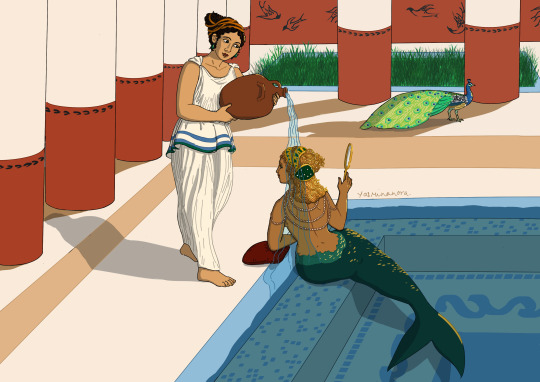
Ancient Greek Mermaid for #historicalmermaid on instagram
#mermay#mermaid#mermay 2023#mermay2023#mermaid drawing#illustration#digital drawing#ancient greece#ancient greek fashion#ancient greek#historical fashion#sirène#mermaids#Character Design#character designs#ancient greek art#digital illustration
89 notes
·
View notes
Text


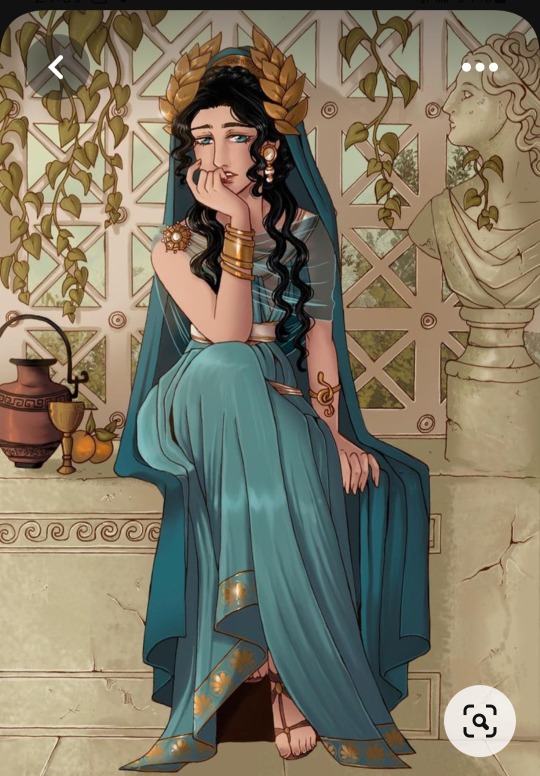


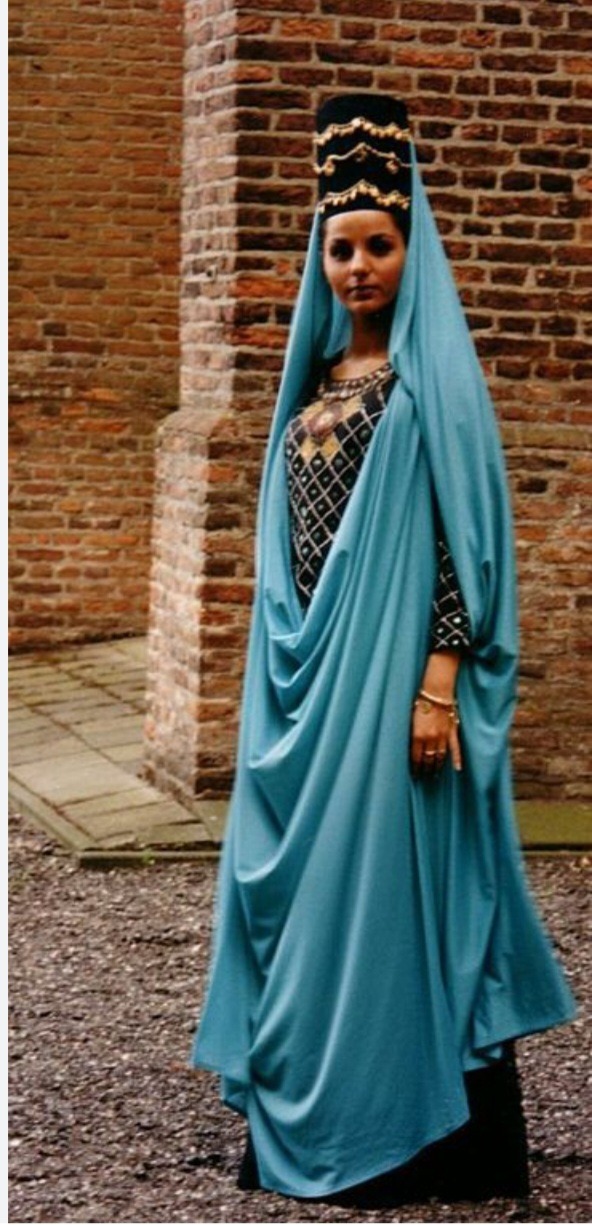
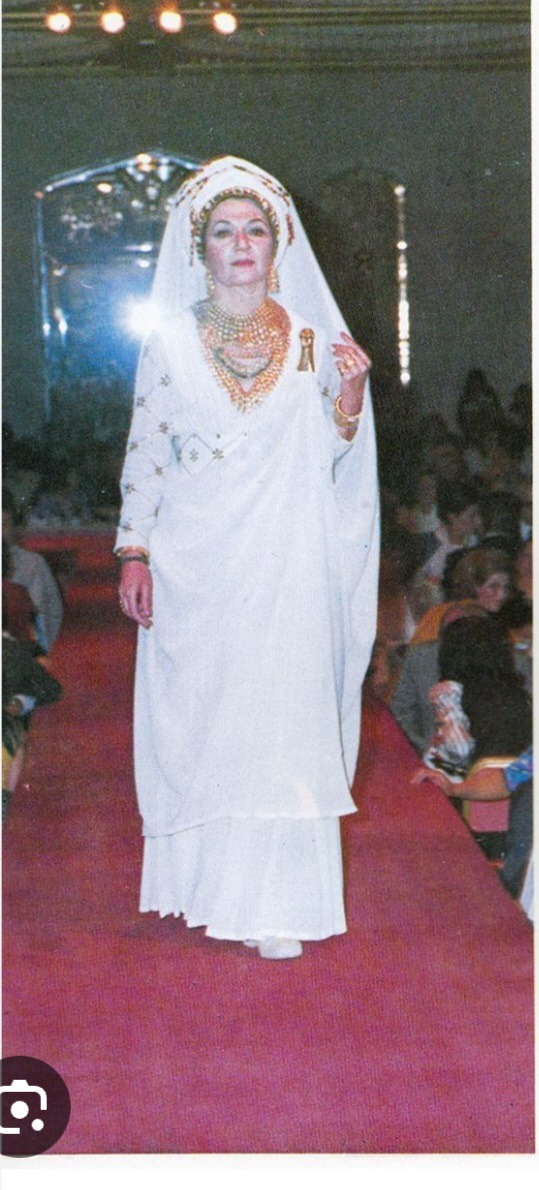
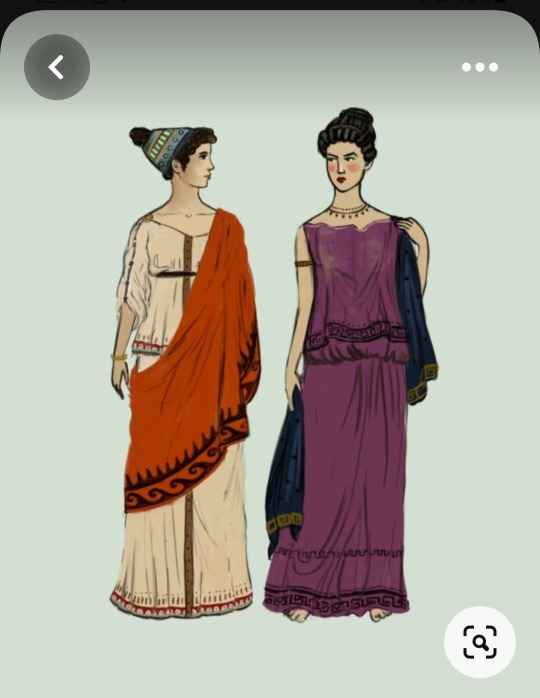
Some attires I can defo see Cleopatra VII wear 🤩🤩🤩🥺🥺🥺🥺
#ancient egyptian fashion#ancient roman fashion#ancient greek fashion#parthian empire fashion#FYI Cleopatra VII is GRECO EGYPTIAN#and she got iranic ancestry in her too btw#cleopatra vii
7 notes
·
View notes
Text
Underworld doodles.
I drew both of these today (about 15 min each?) without thinking. I just doodle whatever pops in my head. It's not till just now posting that I realize that Persephone and Charlie both live in the underworld. Persephone might actually be lovely friends with Charlie and help her if somehow the two of them were to meet, because why not.
Persephone from my Seeds (a retelling of H and P) books. I looked at a few pictures of Minoan/Mycenaean women and their clothing. I know this isn't 100 percent accurate but hey it's a 15 min doodle and personally I love the smug look on her face.
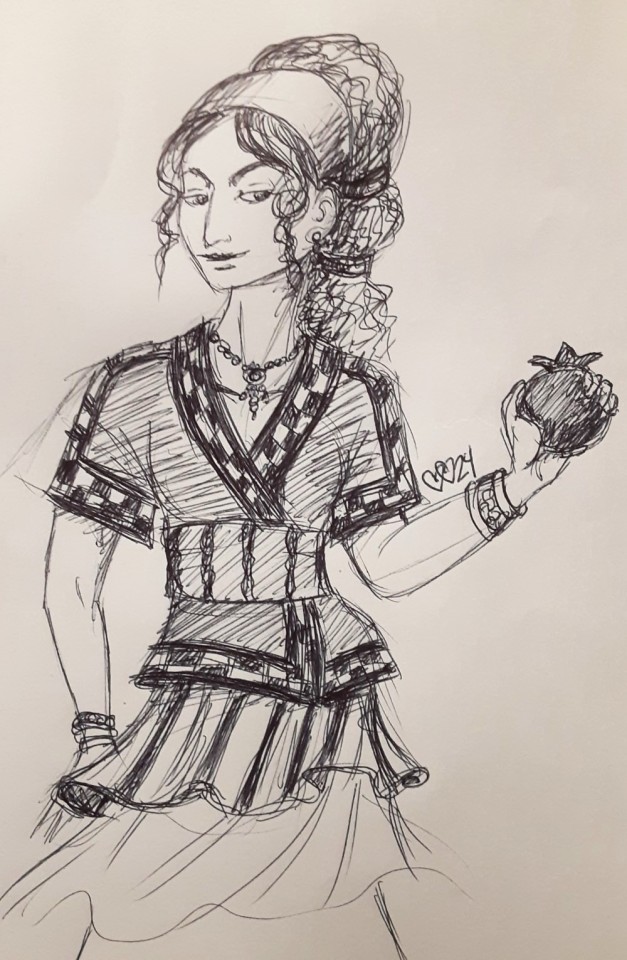
Charlie and Angel Dust. First time doodling these two... the anatomy of Hazbin Hotel really throws me off sometimes ;_;

#strawberrycatbeans#fanart#persephone#charlie morningstar#angel dust#angel dust hazbin hotel#hazbin hotel#hades and persephone#mycenaean fashion#minoan fashion#ancient greek fashion#greek mythology#persephone and the pomegranate
5 notes
·
View notes
Text
New Greek aesthetics!

https://www.heroforge.com/load_config%3D34398553/
Woo! New Greco/Roman aesthetics dropped on Hero Forge! Specifically a couple new sandal designs, two new skirts, a new tunic, plus a sash and shoulder-cloak!
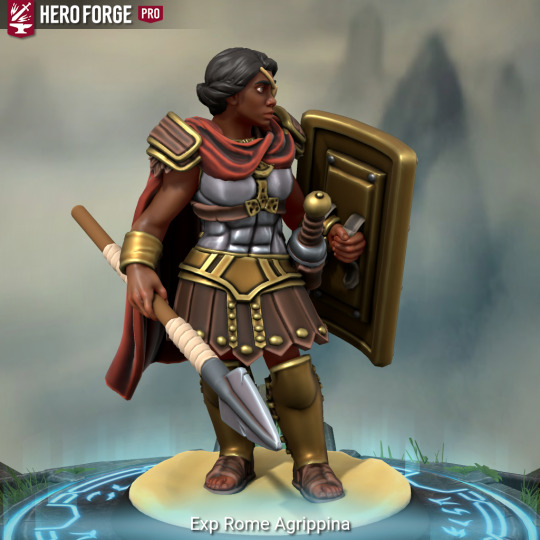
https://www.heroforge.com/load_config%3D28054655/

https://www.heroforge.com/load_config%3D14940405/
25 notes
·
View notes
Text
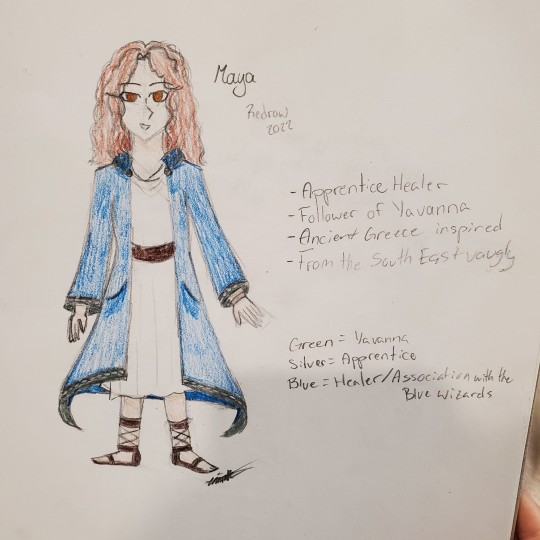

You can't tell because of the lighting but her skin is a light tan.
Anyways first entry for @tolkienocweek
Day 1: Diversity
#my art#traditional art#fanart#OC#tolkien oc#maya#yavanna#tolkienocweek#day 1#diversity#ancient Greek fashion#character design
9 notes
·
View notes
Text
Cast your votes here
1 note
·
View note
Text
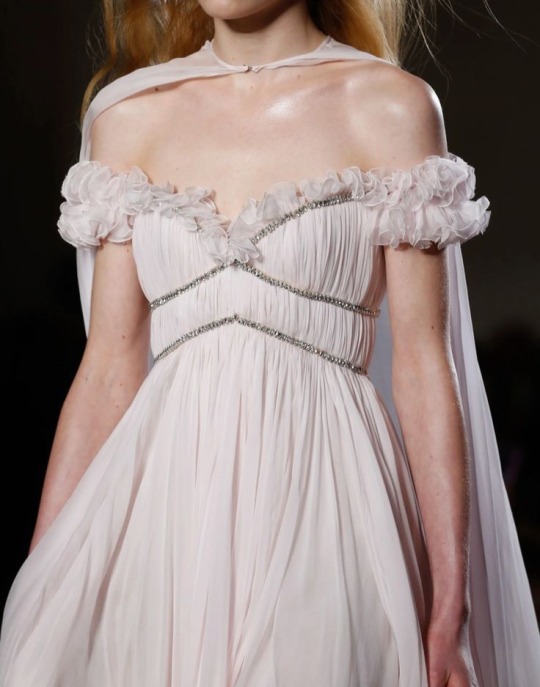
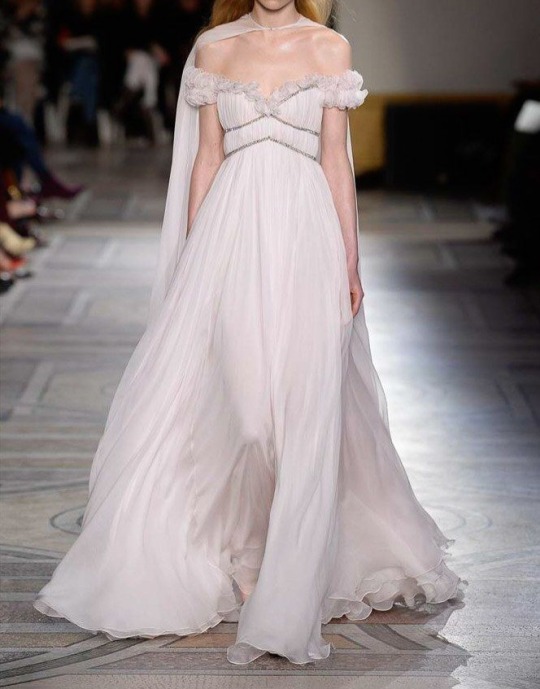
Giambattista Valli Spring 2018 Couture
#giambattista valli#couture#fashion#haute couture#couture fashion#elegant#pink fashion#fairytale fashion#spring couture#ancient greek aesthetic
3K notes
·
View notes
Text

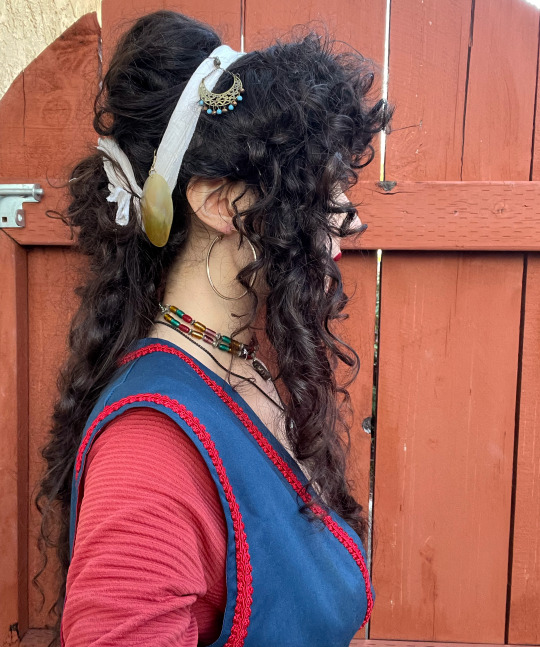


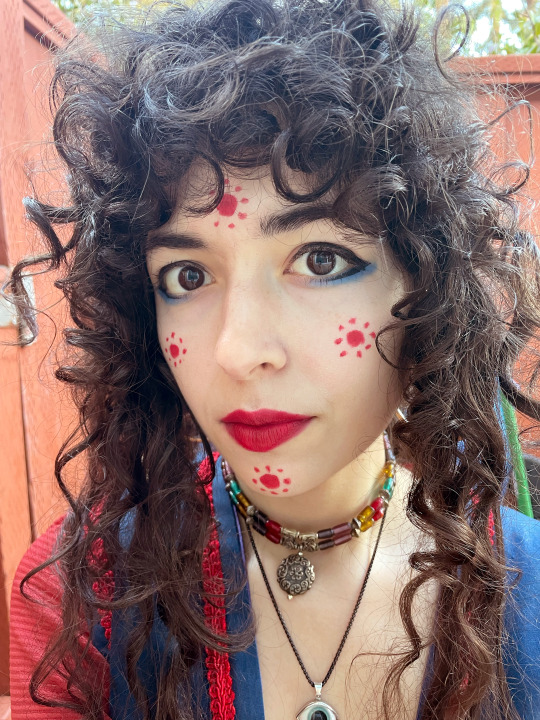

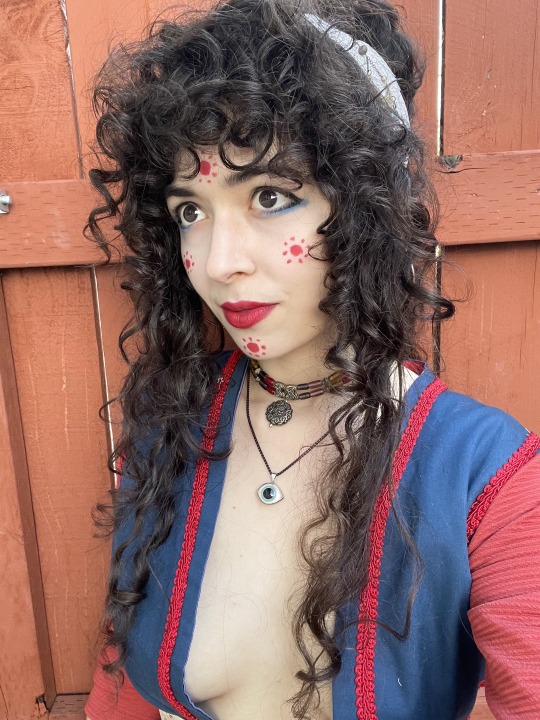
Here are some of the pictures of the Minoan/Mycenaean look I did yesterday! Mind you, it's all very generalized since I haven't made any clothing studies from these time periods yet, so I had just grabbed random clothes and jewelry from my closet that I could at least pass off as the ~vibe~ . I went for a pretty simple interpretation of makeup back then and ended up not really putting a whole lot on my face before the decorative elements, just a very thin amount of white foundation, but even so I figured my skin is pretty pale as it is that if this were historical I probably would have just been fairly bare faced anyway in a similar fashion. I tried to stay pretty close to how makeup might be applied back then and not go too anachronistic, and if I did it was for photographic or artistic purposes (namely, light contouring on my nose not for any sort of like, modern feature minimization, but to make sure my own Greek ethnic features weren't flattened by lighting levels or camera perspective)
Overall this was a really fun exploration of historic culture! Seeing the finished makeup on myself kind of brought over this cultural euphoria for me, even though many things have changed since ancient Mediterranean civilizations, there's almost a feeling of sameness in exploring the history of your heritage and seeing someone who looks or feels like you in ancient art. (But also a brief little disclaimer: the Mediterranean has been an extremely diverse region for thousands of years! I'm just one way of looking and that absolutely isn't representative of all people of Greece, neither then nor now!) I want to explore more historical fashions within this realm, and next time try a more extreme version of the makeup, something that feels more on the ceremonial side than casual like this one.
#wahoo! yippee!!! anywho enjoy and sorry i rambled a lot in the post im not good at being a brief person lol#historical fashion#ancient greece#minoan#mycenaean#greece#greek#history#antiquity#ancient greek#my cosplay
179 notes
·
View notes
Text

Alabastron (Perfume Bottle) from Athens, Greece dated around 470 BCE on display in the British Museum in London, England
This bottle shows an armed Amazon wearing armour and trousers. The Amazons were a group of warrior women whom the Greeks believed to live North of the Black Sea. Unlike Greek women, they are often represented as wearing trousers, a long sleeved top, and a cuirass like the one here. The Amazon on this bottle also carries a shield with an attached patterned cloth and a quiver.
Photographs taken by myself 2020
#armour#armor#art#archaeology#military history#ancient#greece#greek#fashion#british museum#london#barbucomedie
517 notes
·
View notes
Text
Bharani : the birth of Venus.
Part 1

Let's talk about ancient godesses of love and Bharani nakshatra.
I will base my research on the legend of the dead and resurrected god present in many religious myths coming from the middle east (ps : i'm sorry in advance for the grammar, syntax or spelling mistakes that you may find in this post, english is not my first language)
Bharani, situated in the heart of the rashi of aries is governed by Shukr: Venus but also by Yami and Yama in vedic mythology who are twins and gods respectfully of life and death.

Yama, the main deity of Bharani is said to be one of "8 celestial gatekeepers, who guards eight directional doorways or exits through which souls travel from an earthly plane to other planes of existence" making him the lord of Dharma since at one's death, he decides basing on his karma in what plane should one reincarnate.

Since Yama is responsible for directing the flow of life on Earth the association between bharani and the yoni becomes evident: the female reproducting system serves as a portal for souls to take on a physical form. So bharani as Claire Nakti perfectly described it relates to the feminine ability to receive, hold, nurture and ultimately transform through the womb.
Because Bharani aligns itself with all the feminine qualities by excellence it makes sense as to why Venus is it's ruler.
Venus is the roman name for the goddess Aphrodite: in greek mythology. She is said to be the goddess of love and beauty at large but also the goddess of war and sexuality. First because the ancient greeks saw the duality that links love to war and how they seem to come together through sex.
Also, Aphrodite is said to be born from the sperm of Ouranos when his testicules got cut by his son Saturn as he was always feconding Gaia, the Earth and causing her distress: he was acting cruel regarding their children. The sperm of Ouranus got mixed up with the foam of the Ocean creating Aphrodite which means "risen from the foam". So it was interesting to see that as Shukr also means sperm in sanskrit and it shows the origin of Venus as a fertility goddess too.

This conception of Aphrodite directly links her to ancient goddesses of love such as Ishtar or Inana in Mesopotamian/summerian mythology or Isis in egyptian mythology. Most of the time, these goddesses are the female counterpart of a god that was once mortal, got cursed, died and then came back to life for them to form an immortal couple.
In the case of Ishtar, her consort is Dumuzi or Tammuz and Osiris is the consort of Isis.
In Mesopotamian mythology :
Ishtar or Inana in sumerian is the goddess of love and sexuality, beauty, fertility as well as war because of her status as a " bloody goddess" mostly refering to her character in plenty of myths.
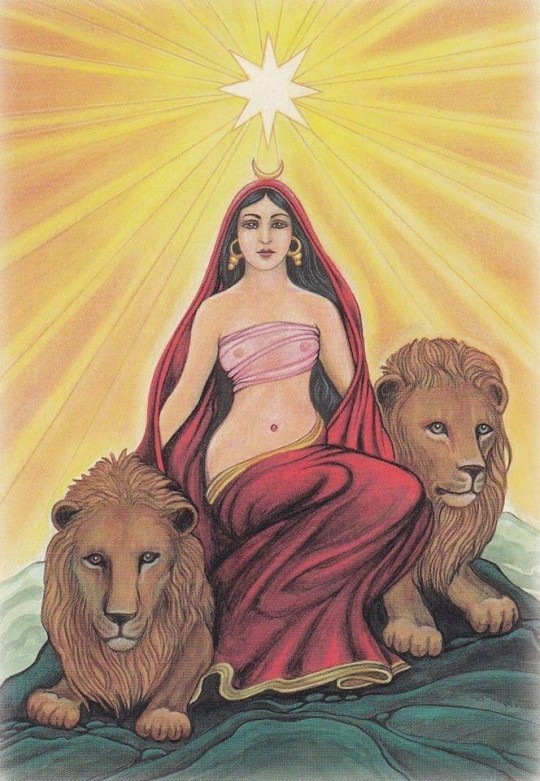
For example: in one story, she became infatuated with the king Gilgamesh, but the latter knowing her fierce reputation, refused her advances. As a result she got furious and unleashed the celestial Bull on Earth which resulted in 7 years of plagues. This celestial bull was later defeated by Gilgamesh and Endiku, and its corpse was throwed in front of Inana. Blinded by rage, she decided that as a punition Enkidu must die and sad at the death of his bestfriend Gilgamesh began his journey to find a cure to Death.
Bharani is a fierce or Ugra nakshatra meaning that its nature is agressive, bold and assertive in pursuing their goals. They are ruthless in the process of accompling what they desire the most and are inclined to extreme mood swings that can result in them to be "blinded" by their extreme emotions perfectly expressing the passionate character of Venus and her other equivalents in differents pantheons of antiquity.
Inana/ Ishtar's story with Dumuzi/Tammur begins as she was convinced to chose him by her brother Utu. Then she got married with the shepphard Dumuzi instead of whom she prefered in first the farmer: Enkinmdou. During the courtship, Inana prefered the fine textile of the farmer and his beer rather than the thick wool and milk of Dumuzi. The preference for the shepphard illustrates that at the time the Mesopotamian civilisation was known for their proliferent agriculture with the egyptians in the region, so this myth encapsulate the opposition between nomads and sendatary people at this specifific time period.

By the way, another symbol of Bharani is the cave and traditionnaly, the cave was used as a storage room for food. Also Bharani's purpose is Artha so these individuals are motivated to accumalate resources and provide safety and security, so Bharani can be linked to the exploitation of natural ressources like the soil illustrating the preference of Ishtar for the farmer. This is reinforced also by its Earth element.
So coming back to the myth, in a mesopotamian text called Inana's Descent to the Underworld, the goddess goes to Kur (hell) with the intent of conquering it, and her sister Ereshkigal who rules the Underworld, kills her. She learns that she can escape if she finds a sacrifice to replace her, in her search, she encounters servants who were mourning her death however she finds Dumuzi relaxing on a throne being entertained by enslaved girls. Enraged by his disloyalty she selects him as a sacrifice and he is dragged to the Underworld by demons.
He is eventually resurrected by Inana and they become an "immortal couple" as he may only come back to life for half of the year, being replaced by his son (?) who is also his reincarnation for the other half of the same years, so describing the cycle of regeneration of life.
Other mythologycal stories of goddesses in the near east describe a similar patterns:
The goddess Asherah is described as being the mother and the lover of her son Adonis.
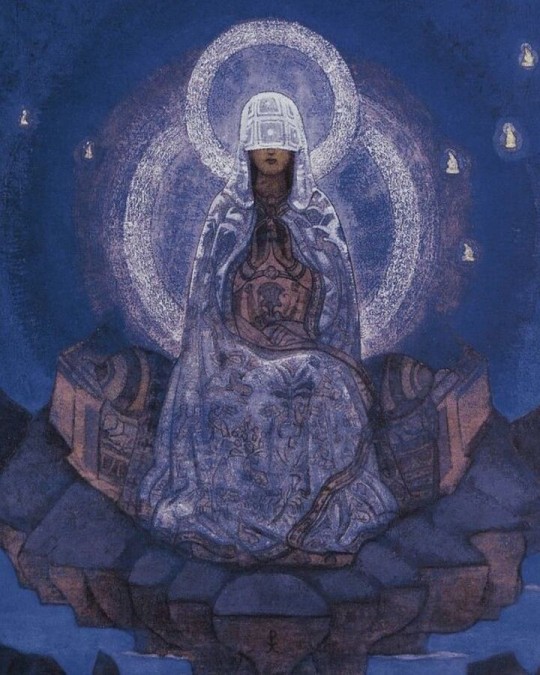
The goddess Cybele in the phrygian pantheon takes the form of an old woman as she described as the mother of everything and of all. And at the same time she is the consort of Attis who his her own son (wtf ?)
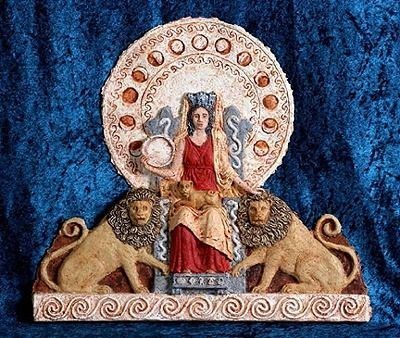
Also, Yama and Yami are implicated in a incestuous entanglement where his sister Yama wanted to lay with him however he refused establishing himself as a god with an infaillible moral campus.
All of these representations illustrate the relation between the masculine and the feminine, life and regenration which are all topics related to Bharani nakshatra. Women by their capacity to give life are seen as the source of life and therefore are eternal as they are able to regenarate themselves through daughters which are identical to them whereas man who is unable to reproduce by himself, is therefore mortal feels the need to associate with her to resurrect through a son who is identical to him. Bharani exiting as the embodiment of the link between "the father and the offspring" which is the feminine vessel.
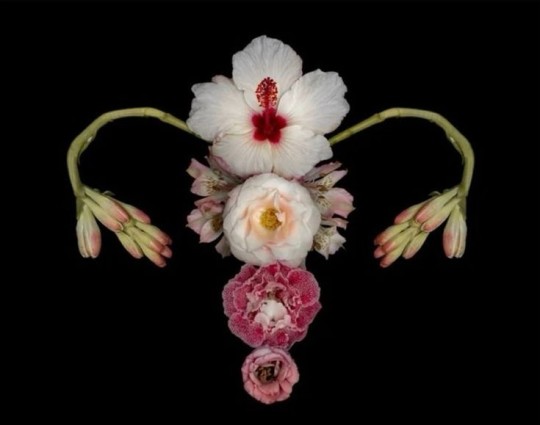

So this is certainly part 1, I think that these ancient myths are where Claire Nakti found her inspiration for her series on Bharani.
#vedic astrology#cinema#coquette#astrology#vintage movies#aesthetic#coquette dollete#fashion#vintage#movies#greek mythology#roman mythology#ancient egypt#bharani#chitra nakshatra#purva bhadrapada#purva phalguni#cowboy carter#venus#adonis
96 notes
·
View notes
Note
Hi!
I saw this amphora for the first time today when I was researching things about Helen of Sparta as a reference for drawing her. From what I saw, the woman is Helen and this art is dated 550 BC. I thought what she was wearing was really beautiful, so I looked up the name of this outfit so I could draw it better.
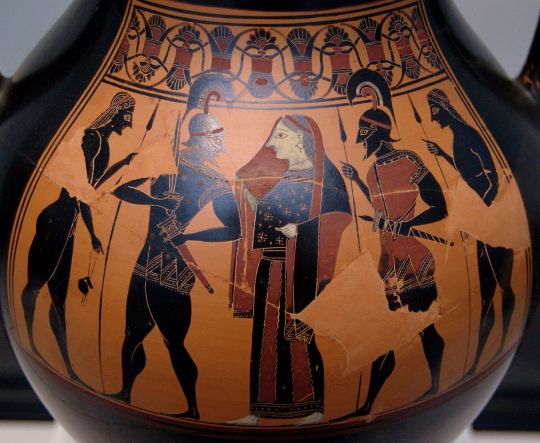
I got the impression that it's a peplos from the images I saw (in particular, these Kore statues are kind of similar because of the patterns: 1, 2, 3. And the shape reminds me of that) and because of the year of the amphora (I read that apparently peplos was popular around the same time), but I'm not sure. Also, is that veil that Helen wears a specific piece of clothing? The only similar thing I've seen referring to clothing in Greek visual arts is himation, but I also don't know if it's one because I haven't found a himation being used specifically in that way (the ones I saw seemed more involved around the body/head).
Do you (or anyone in the comments) know if it's a peplos? If it isn't a peplos, do you/anyone know what it is? And what is this veil, it's a himation?
Hi, I am pretty sure Helen’s outfit is indeed a peplos. You can also tell from how the fabric bulges on the torso.
As for the veil, yeah, I don’t think it’s a himation (it still might be though). It’s little known that occasionally Ancient Greek women did wear a veil, which was called καλύπτρα (kalyptra). A kalyptra was usually used by a matron, a dignified older married woman, likely an aristocrat, and in general the lady of the household. It was associated with propriety and the avoidance of unwanted advances.
Helen, as a married queen in the presence of several men as we see in this amphora, is totally eligible as a woman who would have a kalyptra on. It might also be the artist’s attempt to redeem Helen and in this way abdicate her of any responsibility when she was forced to leave Menelaus for Paris.
A kalyptra was a thing, though not as obligatory or paramount a garment as a veil was in Rome or in the Eastern cultures. The reason we probably don’t see it often in statuary is that Greek sculpture depicted mostly youth and the human body. Young unmarried girls wouldn’t wear such garments.

Here you can see the differences with himation. Himation was a thicker fabric, used for warmth. When cold, it could double as both a himation and a kalyptra. The thin fabric the woman with the chiton in the middle is holding could be a kalyptra.
Not an expert though, so if anyone else has more info about this, please share.
#Greece#Ancient Greece#Ancient Greek clothing#Ancient Greek fashion#Greek culture#peplos#helen of sparta#amphora#archaic period#ask#babyrdie
48 notes
·
View notes
Text
Ancient Necklace with Mosaic Glass Beads, from the Eastern Mediterranean, c.100 BCE-100 CE: this necklace is composed of 30 glass beads, most of which are decorated with stylized faces

From the John Paul Getty Museum:
The beads are made of multi-colored opaque glass and are decorated with heads and floral designs. The necklace is in good condition; some beads are chipped or cracked.

The exact origin of this piece is unknown, but it can be traced back to the Eastern Mediterranean, where it was likely made by a Greek or Roman artist.
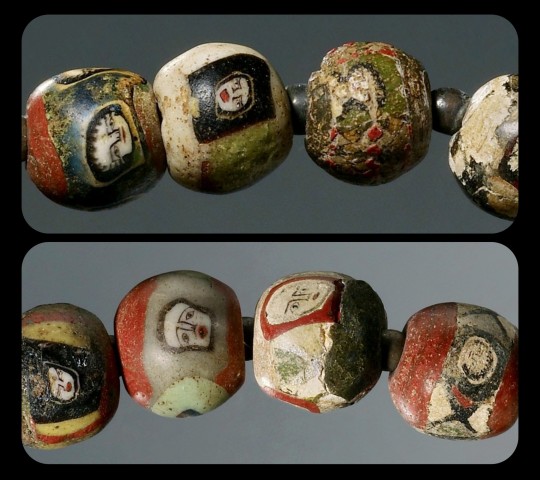
Each bead has a width of about 1.2cm (roughly half an inch); they're decorated with remarkably intricate details, and each face is depicted in its own unique style.

Sources & More Info:
John Paul Getty Museum: Necklace with Mosaic Glass Beads
#archaeology#artifact#history#ancient history#art#greek#roman#ancient art#antiquity#jewelry#beading#glass art#mosaic#crafting#greek art#roman art#eastern mediterranean#ancient#necklace#fashion#style#classical archaeology
76 notes
·
View notes
Text
Time Travel Question 37: Ancient History XVII and Earlier
These Questions are the result of suggestions from the previous iteration.
This category may include suggestions made too late to fall into the correct earlier time grouping. Basically, I'd already moved on to human history, but I'd periodically get a pre-homin suggestion, hence the occasional random item waaay out of it's time period, rather than reopen the category.
In some cases a culture lasted a really long time and I grouped them by whether it was likely the later or earlier grouping made the most sense with the information I had. (Invention ofs tend to fall in an earlier grouping if it's still open. Ones that imply height of or just before something tend to get grouped later, but not always. Sometimes I'll split two different things from the same culture into different polls because they involve separate research goals or the like).
Please add new suggestions below if you have them for future consideration. All cultures and time periods welcome.
#Time Travel#Ancient History#Thera#Crete#Tekhelet#Jewish History#Fashion History#Troy#Western Asia#Ancient Greece#Greek Mythology#Gilgamesh#Sumer#Western Asian History#Pilipili#Trans History#Queer History#History of Religion#Venus of Willendorf#Neolithic#Early Humans#Chinese History#Wu Zeitan#Friesenhahn Cave#Homotheriums#Mammoths#Hominins#Dionysius#Greek Religion
104 notes
·
View notes
Photo
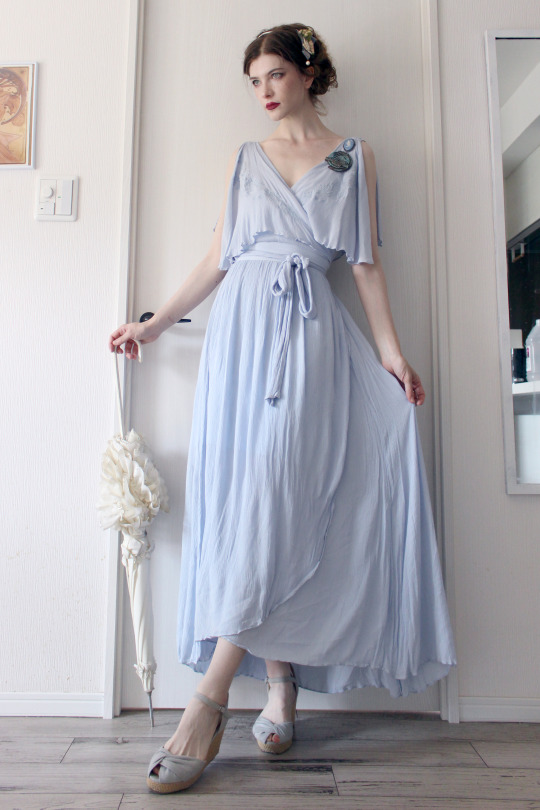
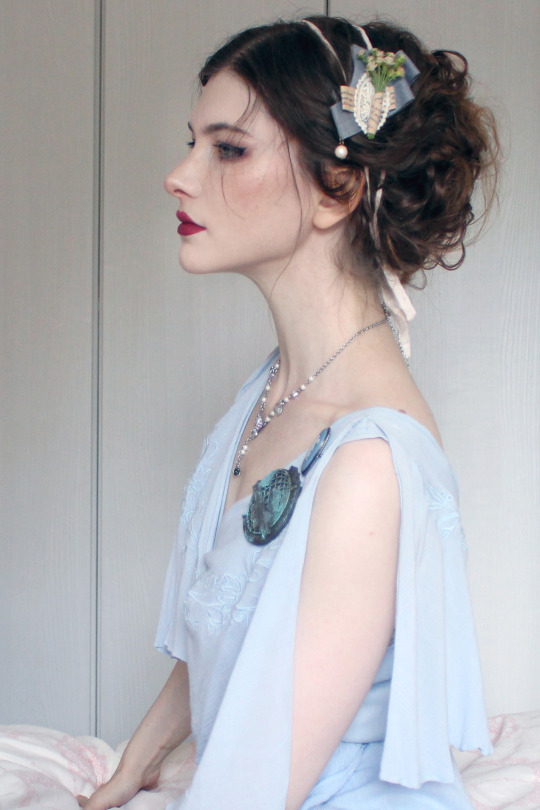

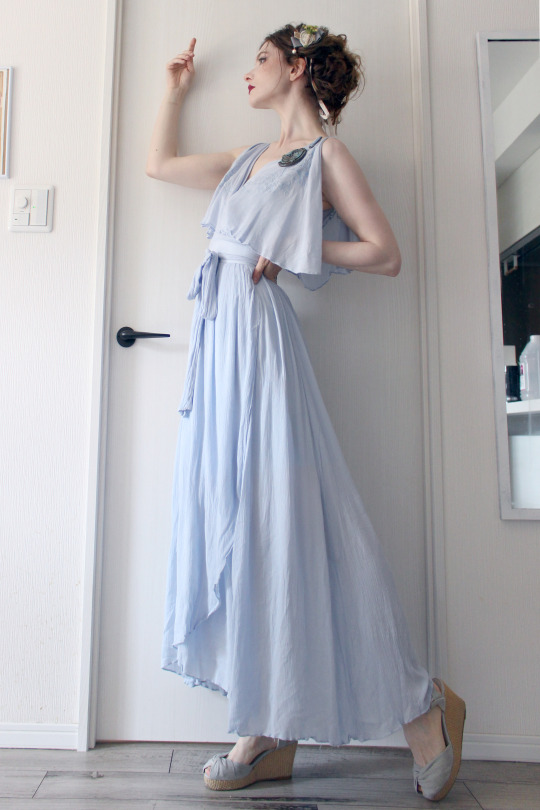

"Sleep, delicious and profound, the very counterfeit of death" -The Odyssey
Hence begins my high summer, very hot weather posting
(I'll be honest with you, I "read" The Odyssey without reading The Iliad, and by that, I mean I listened to the audiobook read by Ian McKellen.)
Outfit rundown
Dress: Boutique 1861
Sandals: earth, music and ecology
Hair pin: Axes Femme
Brooches : thrifted Wedgwood and Design Festa
Necklace (that I removed later because even that was too hot for comfort): Axes Femme
Parasol : Alice and the Pirates
#fashion#vintage#vintage style#vintage fashion#vintage aesthetic#vintage vibe#retro fashion#historybounding#pre raphaelite#preraphaelite#ancient greek#romantic style#fantasycore#blue#long dress#long hairstyles#makeup look#fashion photography#fanny rosie#fannyrosie
1K notes
·
View notes
Text


#dark#dark aesthetic#darkness#gothcore#gothic#gothic fashion#goth aesthetic#dark grunge#grunge#fairy grunge#cottage garden#gardencore#garden#naturephotography#nature#natural#dark naturalism#greece#ancient civilizations#ancient greek mythology#mythological#greek mythology#ancient art#dark academia#academia aesthetic#darkcore#dark art#forest aesthetic#aestethic#aesthetic
153 notes
·
View notes